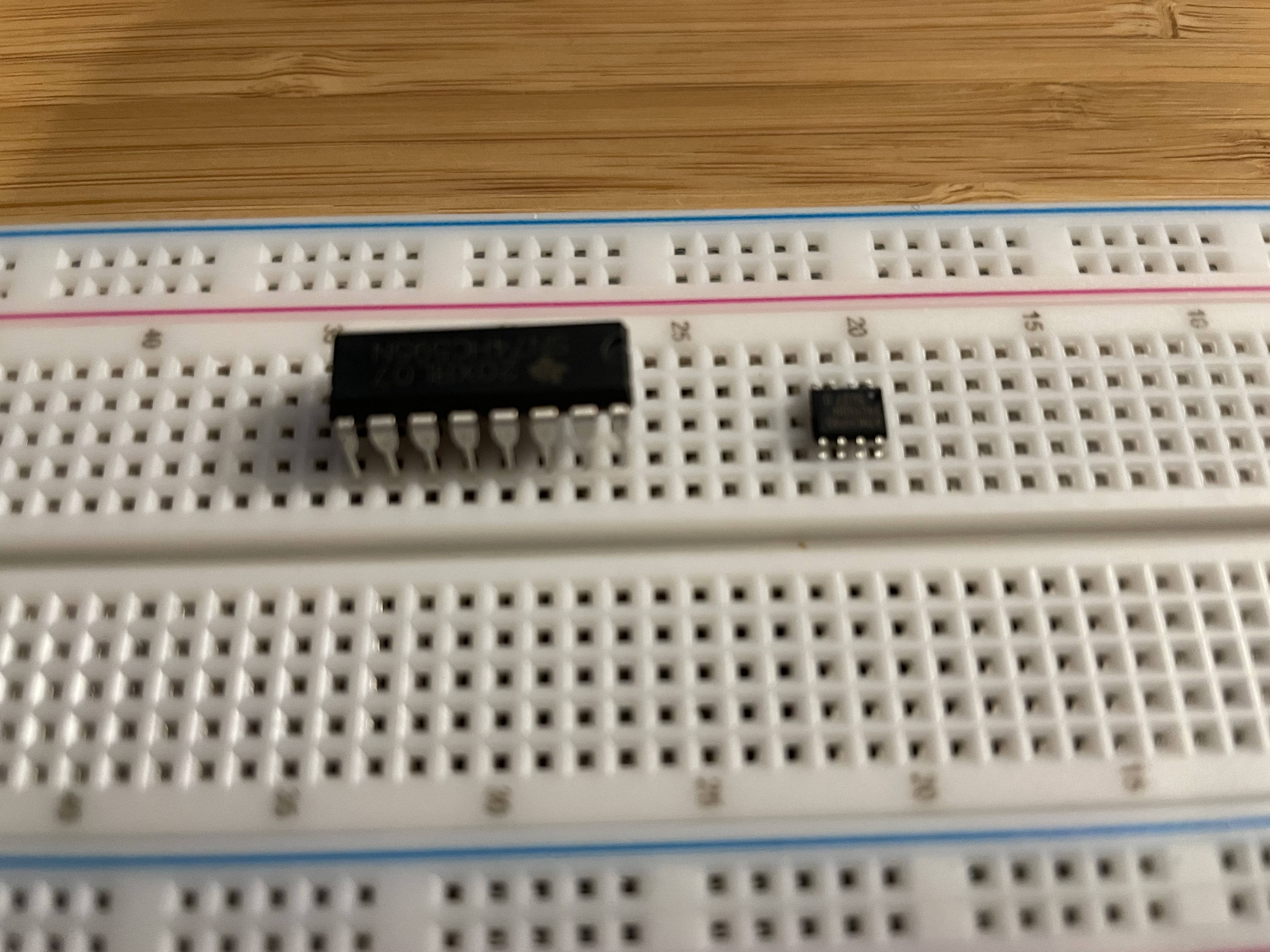Not All Chips are DIPs
09 Mar 2021There is a standard size of integrated circuit called a “DIP”. The EEPROMS that I ordered were not that size. Rather, they are SOIC, which is significantly smaller. As a result, I can’t really use ‘em. Can’t use them in a breadboard without an adapter, and don’t really trust a soldering newbie like myself to manage those tiny pins, whether on an adapter or on an eventual PCB. We’d already come up with several reasons to want to avoid a PCB solution anyway though, so we’ll try out some other approaches before ordering a new set of EEPROMs.

The Raspberry Pi 4 arrived today. Thus far, I’m a little underwhelemed. Managed to make the same modifications to it that I did to the RPi3, and got Super Mario World running via Python script. However, the RPi4 has heat issues — a few minutes into playing I noticed significant dropped frames, and the system started alerting me to overheating. Pulled the plug around 85°C. It has higher power draw as well, being a faster device.
This isn’t the Pi 4’s fault; the case does come with heatsinks and a fan which I could set up. And it’s designed to draw more power and run faster. It’s doing its job. But it’s probably overkill for running SNES emulation. And to be completely fair, while the RPi3 wasn’t overheating, it did let me know I was undervolting it thanks to a shoddy USB charger. Didn’t cause any performance issues, but perhaps it contributed to lower heat.
So there’s some potential device triage to do. I’d love to keep the SNES fanless, given the original console is as well. But let’s get something working, and then we can scale it back to cheaper hardware.